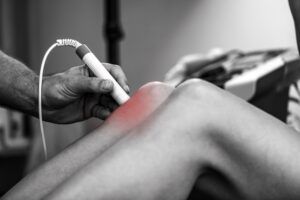Joint replacement surgery is performed to replace an arthritic or damaged joint with a new, artificial joint called a prosthesis. The knee and hip are the most commonly replaced joints, although shoulders, elbows and ankles can also be replaced. Joints contain cartilage, a rubbery material that cushions the ends of bones and facilitates movement. Over time, or if the joint has been injured, the cartilage wears away and the bones of the joint start rubbing together. As bones rub together, bone spurs may form and the joint becomes stiff and painful. Most people have joint replacement surgery when they can no longer control the pain in their hip or knee with medication and other treatments, and the pain is significantly interfering with their lives.

Managing Acute Injuries: Pain Relief Strategies for Sprains, Fractures, and Muscle Tears
Acute injuries such as sprains, fractures, and muscle tears can strike unexpectedly, leaving individuals with significant pain and limited mobility. Residents in Bloomfield, Englewood, Union



